Intro
Remove plantar warts effectively with our comprehensive guide, covering causes, symptoms, and treatments, including cryotherapy, salicylic acid, and home remedies for safe and successful plantar wart removal and foot care.
Plantar warts are a common and often frustrating problem for many people. These small, rough growths can appear on the soles of the feet, causing discomfort, pain, and embarrassment. Understanding the importance of addressing plantar warts is crucial, as leaving them untreated can lead to further complications and spread to other areas of the body. In this comprehensive guide, we will delve into the world of plantar warts, exploring their causes, symptoms, and most importantly, effective removal methods.
The impact of plantar warts on daily life should not be underestimated. Simple activities like walking or standing can become painful and challenging, affecting not only physical comfort but also mental well-being. Moreover, the social stigma associated with warts can lead to feelings of self-consciousness, especially during activities that involve bare feet, such as swimming or going to the beach. It's essential to recognize that plantar warts are highly contagious, making it vital to take preventive measures to avoid spreading them to others or to other parts of the body.
For those suffering from plantar warts, it's reassuring to know that there are numerous treatment options available, ranging from home remedies and over-the-counter treatments to professional medical interventions. The key to successful removal lies in understanding the nature of plantar warts and selecting the most appropriate treatment method based on the wart's size, location, and the individual's overall health. With the right approach, it's possible to eliminate plantar warts, restoring comfort and confidence in one's feet.
Understanding Plantar Warts
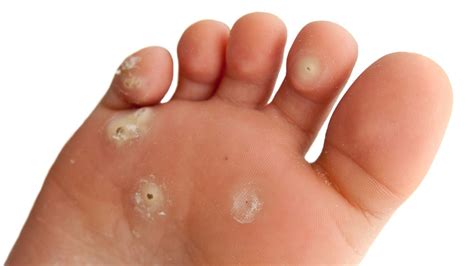
Plantar warts are caused by the human papillomavirus (HPV), which enters the body through small cuts or cracks in the skin. They can appear as small, hard bumps on the soles of the feet, sometimes with tiny black dots in the center, which are actually small blood vessels. The pressure from walking or standing can cause plantar warts to grow inward, leading to pain and discomfort. Understanding the causes and recognizing the symptoms of plantar warts are crucial steps in managing and treating these growths.
Symptoms of Plantar Warts
The symptoms of plantar warts can vary from person to person but typically include: - A small, rough growth on the sole of the foot - Pain or discomfort when walking or standing - Black dots in the center of the wart - A feeling of pressure or a sharp pain when the area is squeezedTreatment Options for Plantar Warts
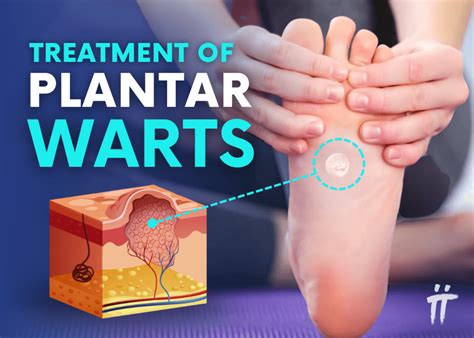
Treating plantar warts can be a process of trial and error, as what works for one person may not work for another. The choice of treatment often depends on the size and location of the wart, as well as the patient's overall health and preferences. Here are some common treatment options:
Home Remedies
Home remedies can be an effective and non-invasive way to treat plantar warts. Some popular options include:
- Duct tape: Applying duct tape over the wart for an extended period can help remove it.
- Castor oil and baking soda: Mixing castor oil and baking soda to form a paste and applying it to the wart can help dissolve it.
- Tea tree oil: Applying tea tree oil directly to the wart can help combat the virus due to its antiviral properties.
Over-the-Counter Treatments
For more stubborn warts, over-the-counter treatments can provide a stronger solution. These include:
- Salicylic acid: Available in various forms such as pads, gels, and liquids, salicylic acid helps dissolve the keratin protein that makes up the wart.
- Cryotherapy kits: These kits allow for the freezing of warts at home, although they may not be as effective as professional cryotherapy.
Professional Medical Treatments
When home remedies and over-the-counter treatments are ineffective, it may be necessary to seek professional medical help. Options include:
- Cryotherapy: A doctor can freeze the wart using liquid nitrogen, which is generally more effective than at-home kits.
- Cantharidin: A blistering agent that a doctor applies to the wart, causing it to blister and eventually fall off.
- Surgical removal: In severe cases, a doctor may recommend surgically removing the wart.
Prevention of Plantar Warts
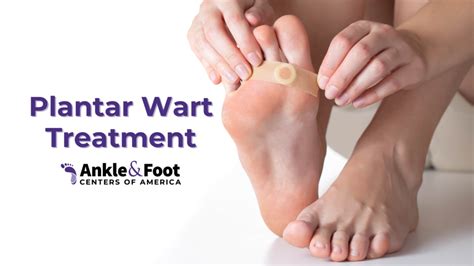
Preventing plantar warts is always better than treating them. Here are some preventive measures:
- Keep your feet clean and dry
- Wear shoes in public areas, especially in swimming pools and locker rooms
- Avoid sharing personal care items like towels and razors
- Wear socks made of natural fibers that breathe
Complications of Untreated Plantar Warts
Leaving plantar warts untreated can lead to several complications, including: - Spread of the virus to other parts of the body or to other people - Increased pain and discomfort - Development of mosaic warts, which are a cluster of small wartsLiving with Plantar Warts
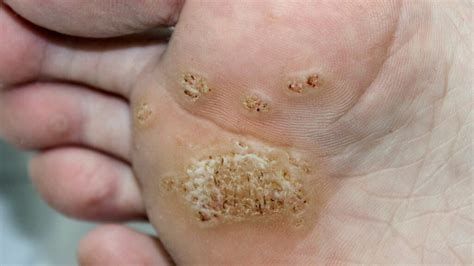
While dealing with plantar warts can be challenging, there are ways to manage the condition and reduce discomfort. Using padding or arch supports in shoes can help redistribute pressure and alleviate pain. Keeping the feet clean and dry, and avoiding scratching or picking at the wart, can prevent further irritation and infection.
Coping Mechanisms
Coping with the emotional and social aspects of having plantar warts is just as important as treating the physical symptoms. Here are some tips: - Practice good foot hygiene to prevent the spread of the virus - Wear comfortable shoes that reduce pressure on the wart - Consider seeking support from friends, family, or a counselor to deal with any emotional distressFuture Outlook and Research
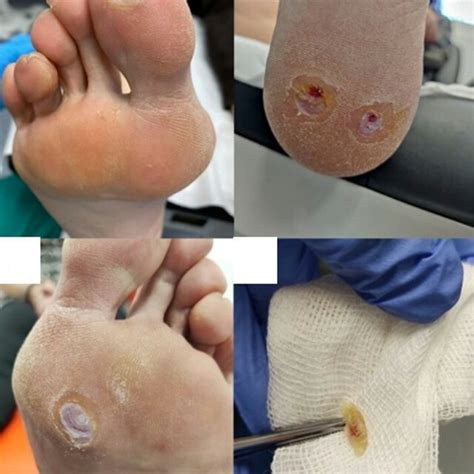
Research into plantar warts and the human papillomavirus is ongoing, with scientists looking for more effective and less invasive treatment methods. Advances in immunotherapy and antiviral medications hold promise for the future management of plantar warts. Additionally, public awareness campaigns about the prevention and treatment of plantar warts can help reduce their incidence and alleviate the stigma associated with them.
Emerging Treatments
Some emerging treatments for plantar warts include: - Immunotherapy: Stimulating the body's immune system to fight off the HPV virus - Antiviral medications: Targeting the virus directly to prevent its replication - Laser therapy: Using laser technology to destroy the wart tissueWhat causes plantar warts?
+Plantar warts are caused by the human papillomavirus (HPV), which enters the body through small cuts or cracks in the skin.
How are plantar warts treated?
+Treatments for plantar warts include home remedies, over-the-counter treatments, and professional medical interventions such as cryotherapy and surgical removal.
Can plantar warts be prevented?
+Yes, plantar warts can be prevented by keeping the feet clean and dry, wearing shoes in public areas, avoiding shared personal care items, and wearing socks made of natural fibers.
In conclusion, plantar warts are a common issue that can significantly impact one's quality of life. By understanding their causes, symptoms, and treatment options, individuals can take the first steps towards removal and prevention. Whether through home remedies, professional treatments, or preventive measures, managing plantar warts is achievable. We invite you to share your experiences, ask questions, or seek advice on dealing with plantar warts. Together, we can work towards a future where plantar warts are a thing of the past.
